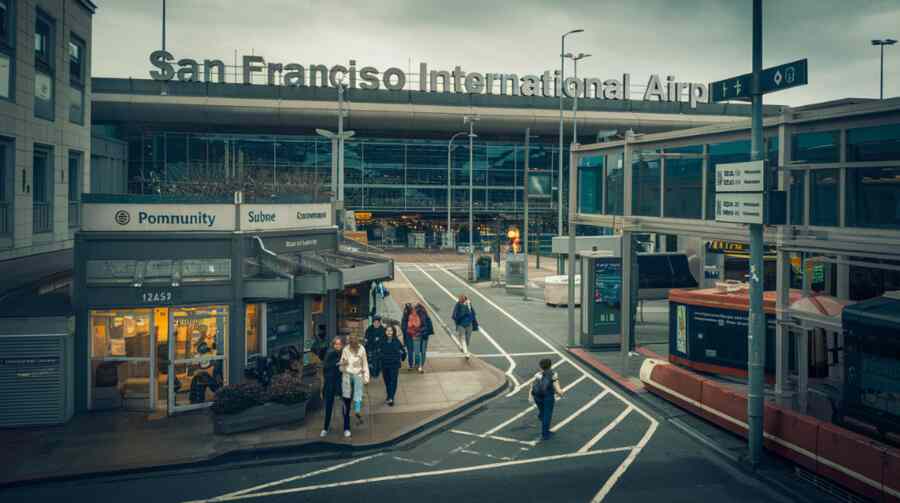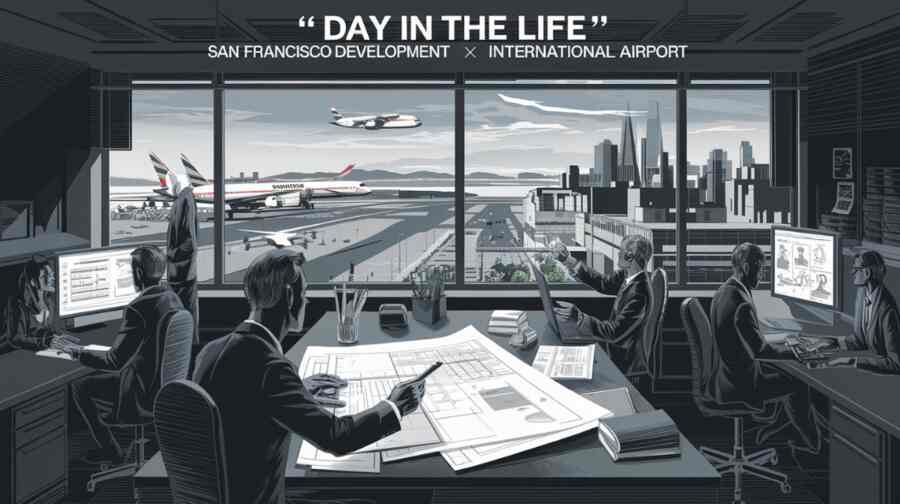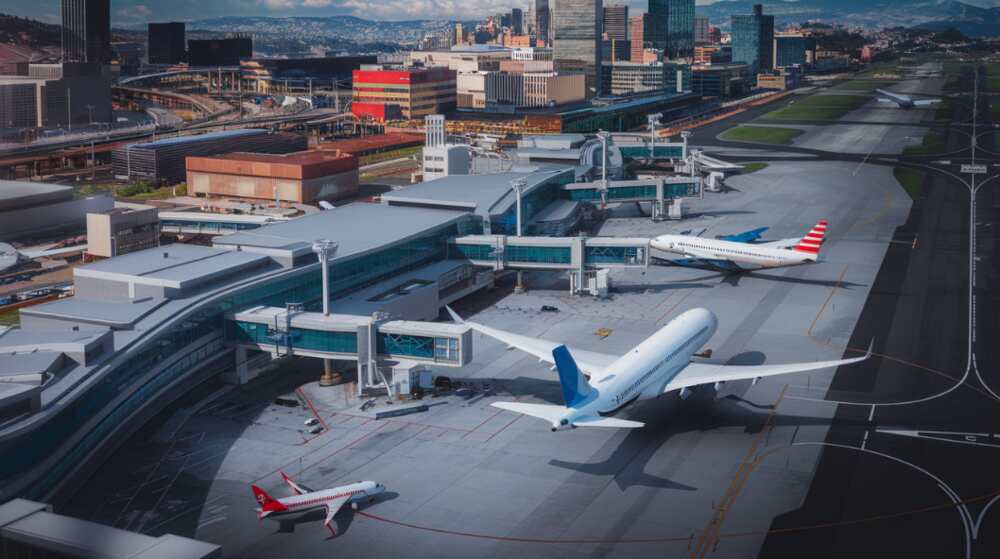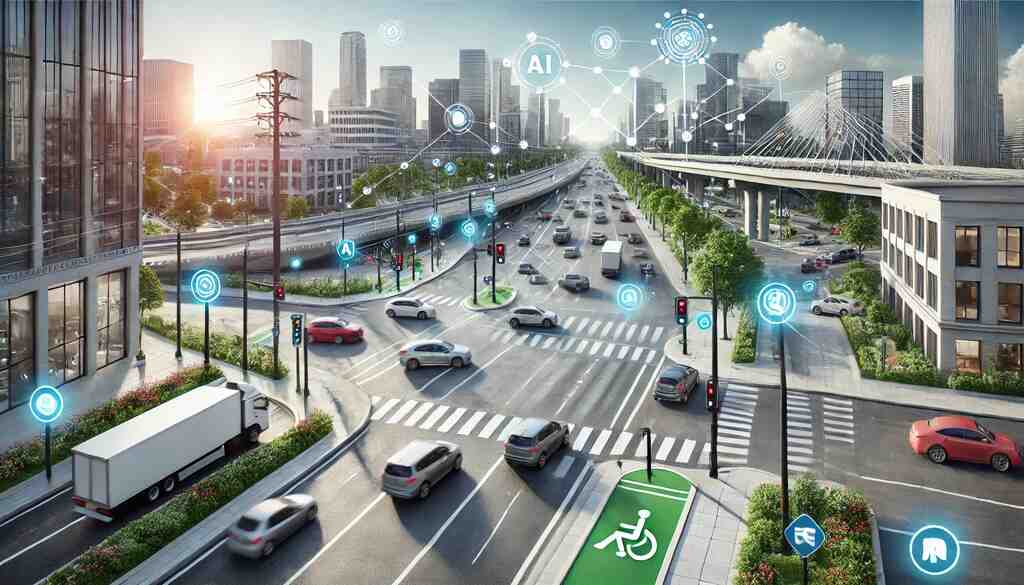Imagine being one of those passengers getting off a plane at San Francisco International Airport. The broader area is the new business centers, the public transportation renovation, and the sprinkling of new below-market-rate housing way out in the distance. You might not think much of this results from a highly considered process. Backstage, Economic Development Planners are working hard to keep that development on track. But what does this position include, and what are its effects on the Bay Area?
Table of Contents
ToggleThe airport development planner at SF Airport therefore plays an important role.
At SFO Airport, the planner for economic development has a very special job that combines public and private interests: government agencies, local businesses, and community interests. His tasks include strategic airport guidance giving economic development to the maximum level, with due consideration for residents’ needs and the surrounding environment.
Responsibilities will include:
Growth opportunities identification: Planners study economic trends to identify where investment from either the public or private sector will be most lucrative. This may mean investing in startup companies in the fields of technology or encouraging modes of transportation that would be more sustainable for the community.
Coordinating with the local entities:
This is achieved through joint effort, whereby planners will work with city governments, regional transit authorities, and private entities for an integrated development that would be beneficial to the entire community in general.
Studies of Community Engagement and Impact:
Besides the above, economic development planners need to understand community concerns and also conduct impact studies. The job ascertains that development will keep being positive for the residents through research and advocating sustainable solutions that don’t contribute negatively to citizens’ lives, including increased traffic flow or noise.
By steering such responsibilities, an economic development planner assists in ensuring that SFO remains a key economic driver while developing an environment that fosters benefits for all in the Bay Area.
SF Airport as a Catalyst for Regional Economic Growth
SFO was never just an airport. As one of the busiest travel centers on the West Coast, it draws in millions of passengers annually, connecting people and businesses from different corners of the world. Situated at the very center of the region, the SF Airport naturally takes leadership in local economic development; planners are leveraging this position to create even more opportunities for the region.

How SFO fuels regional growth:
Physical development: Sometimes, investment in roads, transit systems, and even green spaces improving the quality of life for locals is inspired by the airport.
Attraction and support of business:
Firms want their facilities to be near a well-connected airport, hence planners develop the supporting environment for businesses so that SFO remains relevant for multinationals and startups alike. This, in turn, boosts jobs and amplifies business opportunities for residents.
Sustainability Initiatives:
SF Airport has also committed itself to being a leader in green initiatives, with the goal of zero net energy in its operations. Economic development planners play a central role in encouraging green businesses and sustainable practices to match the region’s eco-conscious goals.
Picking Up the Pieces: Overcoming Obstacles to Economic Development
Growth is never free of its side effects, and planners at the SF Airport work day in and out to look for solutions for very intricate issues.
Growth and Community Needs: A Delicate Balance
Where economic growth does occur, it often tends to make residents anxious when such growth interferes with daily life. At other times, there are major issues, such as increased traffic or environmental concerns, which really demand careful planning in relation to balancing growth with the needs of people living around the airport.
Address Traffic and Congestion
The big issue anyone has with a large airport is always the traffic problem. The planners of the San Francisco Airport work together with transportation officials in the area to look into options such as expanded public transportation, bike lanes, or even pedestrian-friendly regions. These initiatives are not solely about convenience but have a twin purpose: minimizing emissions, making commuting easier, and enhancing access.
Economic Uncertainties
Besides that, economic development planners have to consider the probability of economic decline or disruptions. Economic resiliency planning makes sure that growth will continue in the case of ups and downs in travel demand. Diversification of economic activities driven around the airport creates a sound foundation for sustainable growth.
How the Role of an Economic Development Planner Affects Everyday Life
The work of an economic development planner at SF Airport goes much further than a function related to job creation or infrastructure improvements. They are the ones who shape the environment around the airport and make sure they have a positive impact on the daily lives of residents and travelers alike.

Creating jobs and supporting local businesses.
Every development project that is initiated introduces some new job opportunities in a region that help the community maintain or achieve stable, well-paying jobs. It also helps other local businesses, like restaurants and technology startups, because new projects attract not just workers but also customers.
Improved Community Services
Projects headed by economic development planners often involve developing community services such as housing that is affordable, public parks, and schools to make the area friendlier for families and a life of higher quality for all over the area.
Day in the Life of an Economic Development Planner at SF Airport
The work of an economic development planner is challenging and rewarding at the same time. A typical day may cover:

- Morning meetings: A planner’s day would typically begin with meetings either with the local government, city planners, or private sectors where the objectives of a project are discussed along with timelines and potential challenges.
- Site visits: Planners take on-site visits to see existing developments or potential areas to be used for new developments. This exposes planners to hands-on involvement with the community they serve.
- Data Analysis and Reporting: Much of a planner’s day is spent reading economic data reports, preparing reports, and creating presentations. The reports drive decision-making and permit the solicitation of funding for other projects.
Conclusion (Economic Development Planner sf Airport)
The reason economic development planners are hard at work at SF Airport is to ensure that ongoing regional growth continues to pay great dividends to residents, businesses, and travelers alike. Such planners combine strategic planning, community engenderment, and economic foresight to ensure that SF Airport keeps pushing the envelope of positive change across the Bay Area. Working towards a thriving, sustainable environment, they remind us all that airports are not just points of transit, but engines of opportunity and growth.
Get expert tips and financial guidance at LookMyFinance.com






